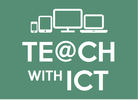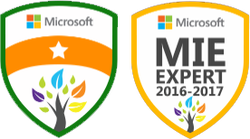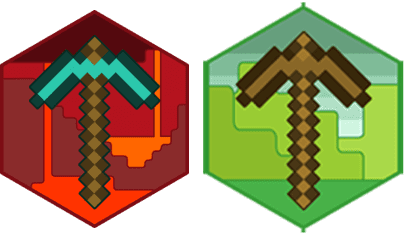|
As part of our Digital Leaders programme, we are starting to explore the use of Open Badges to recognise / reward students' achievements.
What are Open Badges? Open Badges is a new digital reward system which allows students to verify their skills, interests and achievements and store them all in one place. The badges are awarded by completing a series of tasks or meeting a set of criteria for which students must supply evidence. What makes these different to other online reward systems is that all the evidence such as, criteria, name of issuer, date of issue, student’s evidence and standards for each achievement are stored or ’baked‘ inside each badge in the form of metadata. To find out more about Open Badges, visit my blog post: Give recognition for your student's achievement - Award them Open Badges Making waves with Digital Leaders and Open Badges One model which we have started to use and demonstrates how Open Badges can successfully be used to recognise and reward student achievement is Makewaves. Makewaves (https://www.makewav.es/) is a safe social learning platform for 5-19 year olds (ideal for students and teachers). Makewaves fully integrates with Open Badges allowing teachers to make and award badges to their students. Students under the age of 13 can earn badges through Makewaves and convert them to Open Badges when they are old enough. Badges are currently available from a number of organisations including Computing At School, Rising Stars, Comic Relief and the National Literacy Trust. Chris Sharples (@gr8ict), Head of ICT at Lady Lumley's School has created a set of badges especially for Digital Leaders called DLOpenBadges. For those new to the concept, Digital Leaders are students who are adept at using technology and are willing to share their knowledge and skills with others. Through working with staff, peers and school leaders, Digital Leaders are able to help shape how technology is used in and outside of the classroom. Chris has also kindly created a network to allow Digital Leaders from different schools to share best practice and celebrate their achievements. To find out more, visit the Makewaves dedicated Digital Leaders network: https://www.makewav.es/digitalleaders or Chris Sharples official Digital Leaders blog: http://www.gr8ict.com/
0 Comments
Leave a Reply. |
Author:Simon Johnson Microsoft Innovative Educator Expert / MIE Trainer
Minecraft Cert. Educator / Global Mentor
CAS Master Teacher
Raspberry Pi Cert. Educator
Tickle Ambassador
Archives
November 2016
Categories |
Search by typing & pressing enter






 RSS Feed
RSS Feed
